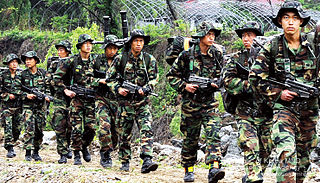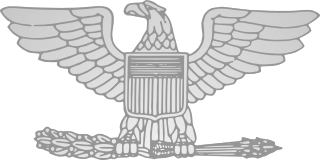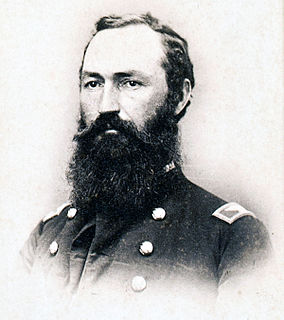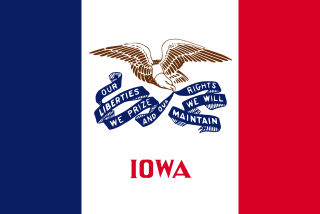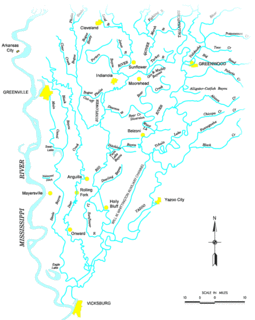The 21st Regiment Iowa Volunteer Infantry was an infantry regiment that served in the Union Army during the American Civil War.
The 30th Regiment Illinois Volunteer Infantry was an infantry regiment that served in the Union Army during the American Civil War.
The 7th Louisiana Regiment Infantry was a regiment in the Union Army during the American Civil War. The regiment served in Mississippi, Louisiana and Arkansas and mustered out March 13, 1866.
The 9th Louisiana Infantry , later reorganized as 1st Mississippi Colored Heavy Artillery and then renamed 5th U.S. Colored Heavy Artillery, was an African-American regiment in the Union Army during the American Civil War. It famously fought in the Battle of Milliken's Bend; one of the earliest Civil War battles with African-American troops involved.
The 10th Louisiana Infantry was a regiment in the Union Army during the American Civil War. It was composed primarily of freed or escaped slaves from Louisiana's plantations and was commanded by white officers.
The 12th Louisiana Regiment Infantry was a regiment in the Union Army during the American Civil War.
The 3rd Louisiana Regiment Native Guard Infantry was a regiment in the Union Army during the American Civil War.

The 1st Kansas Volunteer Infantry Regiment was an infantry regiment that served in the Union Army during the American Civil War. On August 10, 1861, at the Battle of Wilson's Creek, Missouri, the regiment suffered 106 soldiers killed in action or mortally wounded, one of the highest numbers of fatalities suffered by any Union infantry regiment in a single engagement during the American Civil War.
The 11th Louisiana Infantry was a regiment in the Union Army during the American Civil War.
The 42nd Ohio Volunteer Infantry was an infantry regiment in the Union Army during the American Civil War.
The 58th Ohio Volunteer Infantry was an infantry regiment in the Union Army during the American Civil War.

The Battle of Lake Providence was an engagement that was fought between Confederate and Union forces near Lake Providence, Louisiana on June 9, 1863, during the Vicksburg Campaign of the American Civil War.
The 11th/17th Consolidated Arkansas Infantry (1861–1865) was a Confederate Army infantry regiment during the American Civil War. The unit is also known as the 11th/17th Arkansas Mounted Infantry or the 11th/17th Arkansas Cavalry. At various times after the consolidation, members of the unit who were captured gave their unit as either the 11th Arkansas Cavalry or the 17th Arkansas Cavalry.
The 48th United States Colored Infantry Regiment was a U.S.C.T. infantry regiment in the Union Army during the American Civil War. It was organized from the 10th Louisiana Infantry in March 1864 and fought in the Gulf Coast areas as part of the Department of the Gulf. It participated in the Battle of Fort Blakely in April 1865, after which it served in various garrison roles in Texas until it was mustered out on January 4, 1866. During its time of service the regiment lost three officers and 59 enlisted men killed and mortally wounded and one officer and 464 enlisted men died of disease, for a total of 527.
The 46th United States Colored Infantry was an infantry regiment that served in the Union Army during the American Civil War. The unit was originally designated as the 1st Arkansas Infantry Regiment. The regiment was composed of African American enlisted men commanded by white officers and was authorized by the Bureau of Colored Troops which was created by the United States War Department on May 22, 1863.
The 52nd United States Colored Infantry was an infantry regiment that served in the Union Army during the American Civil War. The regiment was composed of African American enlisted men commanded by white officers and was authorized by the Bureau of Colored Troops which was created by the United States War Department on May 22, 1863.
The 53rd United States Colored Infantry was an infantry regiment that served in the Union Army during the American Civil War. The regiment was composed of African American enlisted men commanded by white officers and was authorized by the Bureau of Colored Troops which was created by the United States War Department on May 22, 1863.
The 61st United States Colored Infantry was an infantry regiment that served in the Union Army during the American Civil War. The regiment was composed of African American enlisted men commanded by white officers and was authorized by the Bureau of Colored Troops which was created by the United States War Department on May 22, 1863. The non-commissioned officers and enlisted men were African Americans. The regiment was originally organized as the 2nd Tennessee Volunteer Infantry and was also referred to as the 2nd West Tennessee Infantry Regiment .
